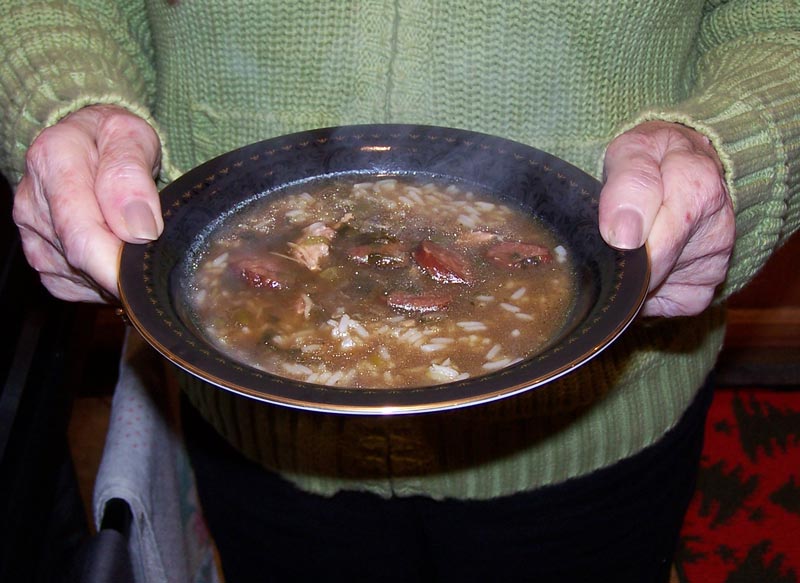
Making South Louisiana Style Gumbo
P. Michael Henderson
December 29, 2008
Gumbo is a dish developed by the Cajuns in south Louisiana. It has the consistency of soup and is usually served over rice - rice being a staple of south Louisiana, like potatoes are elsewhere (side note: cooks in south Louisiana often say that they start preparing dinner by putting rice on to cook - then they decide what to cook. Rice is always a part of the meal). Like many other Cajun dishes, such as jambalaya, gumbo is a versatile dish - it's generally made with whatever you happen to have on hand. In south Louisiana, that is generally seafood, especially shellfish, chicken (or other fowl), and sausage - smoked sausage and andouille.

While I was raised in south Louisiana by a French Cajun mother, I'm only so-so when it comes to cooking many of the Cajun dishes. But for Christmas this year, we got together with my sister and her husband (Donald Triche, see pix below) who is an authentic Cajun cook. He brought some andouille and smoked sausage and he and I made gumbo for the family. I took pictures of the process so I could document how gumbo is made.

First off, let me say that there's no one right way to make gumbo. Everyone who makes it does it differently, and each batch is different because the cook uses what's on hand. But, if made well, each batch is delicious and offers a slightly different taste.
For our gumbo, we used chicken, smoked sausage and andouille as the primary ingredients. But before I go on, let me make a few comments about andouille. Andouille is a smoked "sausage", generally made from cut up pork (not ground up). The sausage link is larger around than ordinary sausage, perhaps an inch and a half in diameter. It is a "dry" sausage, meaning that it is firm. Here in California, where I now live, I've seen something called andouille which is nothing like the andouille of south Louisiana. Bailey's and Jacob's in Laplace sell good andouille but other people in the same area make very good andouille. Don prefers Bailey's. If you're going to use andouille in gumbo, get the real stuff - not that pale imitation like California "andouille".
Here's the approximate measurements of what we used.
1/2 to 3/4 cup flour for the roux along with vegetable oil, if you want to make a "wet roux". The oil should cover the bottom of the pot. But see the description of the "dry" roux later on this page.
1 Bunch of green onions
1 Lb. Andouille
1 Lb Smoked Sausage
6 Chicken Thighs
1 Large onion (red,yellow,or white)
1/3 bunch of parsley
1 large bell pepper
2 tbs file
Do not add any salt & pepper until the
very end. It may be seasoned enough from the sausage, andouille & chicken.
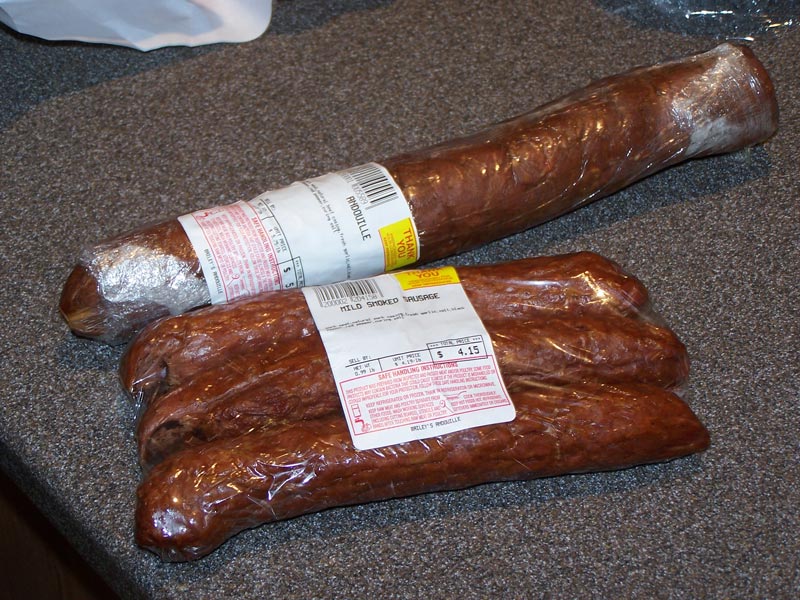
While I described gumbo as having the consistency of soup, gumbo is thickened (and flavored) with a roux, with okra, and/or with file (pronounced "fee - lay"). While many people do not use okra and file together, I've done so with good results. But gumbo is always made with a roux - many south Louisiana recipes begin with the words, "First you make a roux..."
But before I get into the cooking, let me talk about the ingredients and their preparation. Like many dishes, there's a good bit of preparation before the cooking. We had some green peppers grown by my niece's husband (Doug) so we used that along with some other mild peppers he had. Added to that, I cut up a red onion, green onions, and parsley. We would normally use a large white onion but my niece (Dawn) prefers the milder taste of the red onion so that's what we used. You can also use celery in the gumbo. Note that I never give any measurements for the ingredients. The reason is that you just don't measure when making gumbo - it's not that critical. A little more or less of any particular ingredient won't make a major difference in the final dish. It will affect the final dish, but it'll still taste good. Ordinarily, one large green pepper and one large onion will work fine.
Also note that we didn't use any okra - okra is primarily used in seafood gumbo. I really like okra in gumbo and recommend it to you if you're making seafood gumbo. You can usually find it in the frozen food section of your grocery store. For the amount of gumbo we're making here, one medium pack of okra is about right.
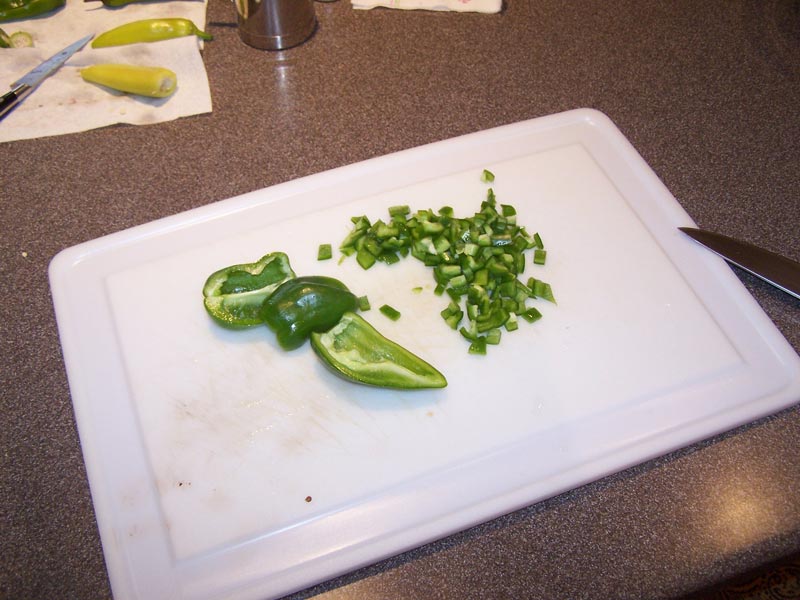
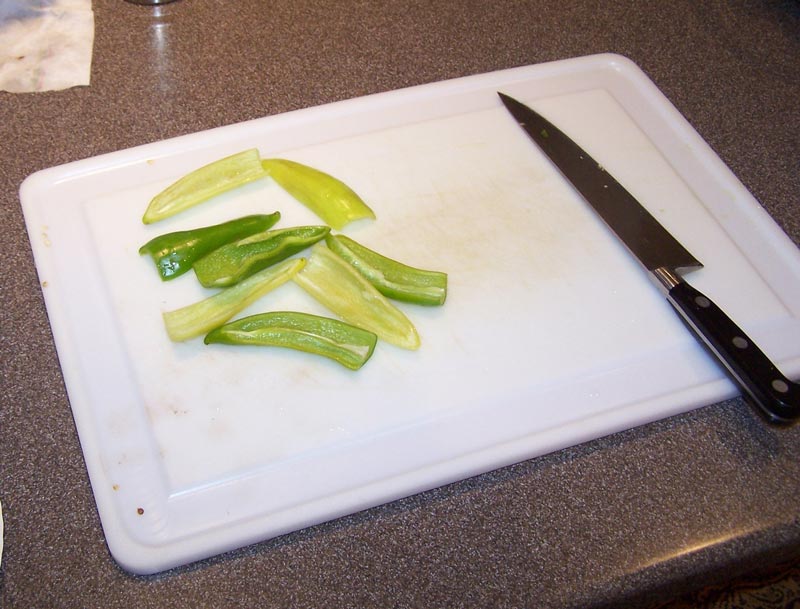
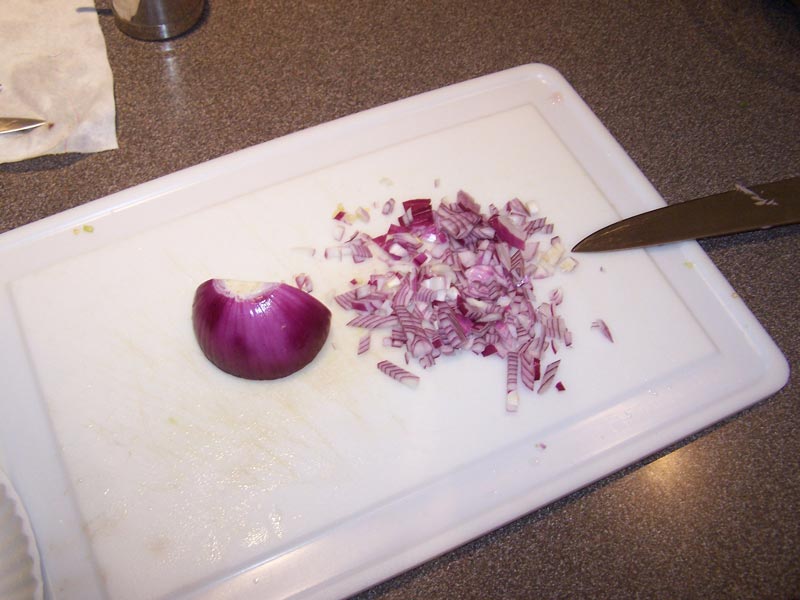
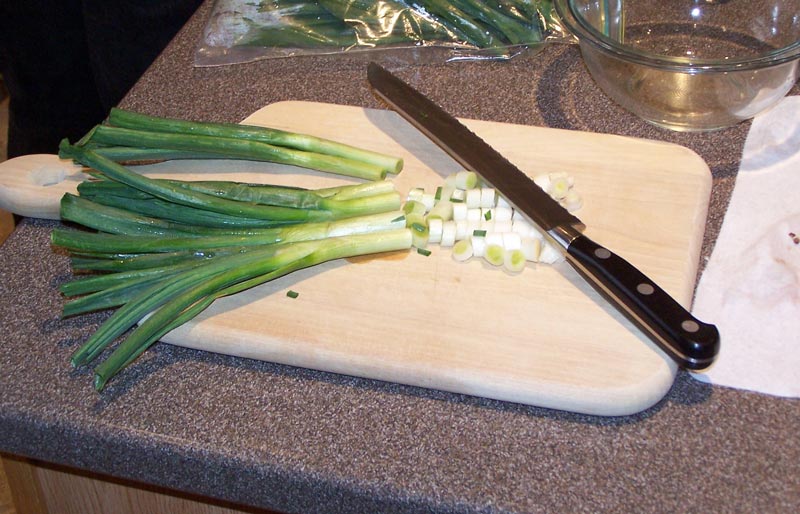
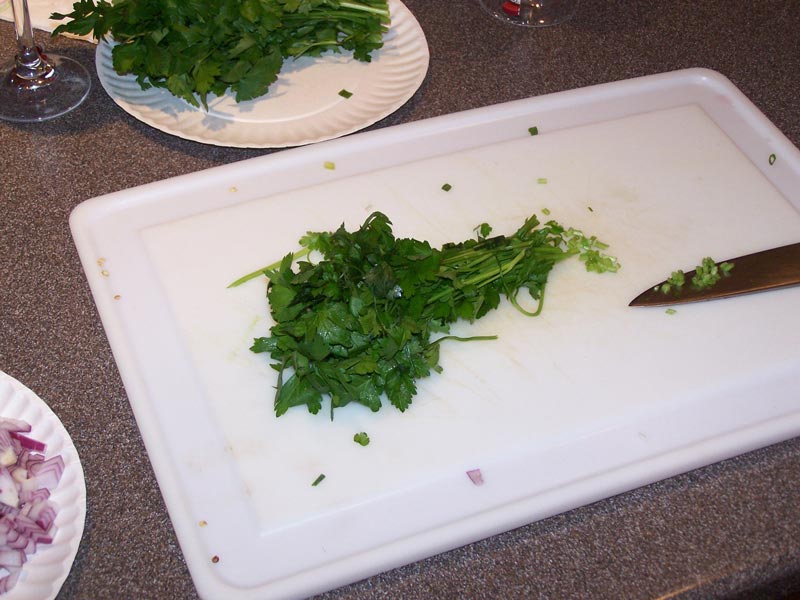
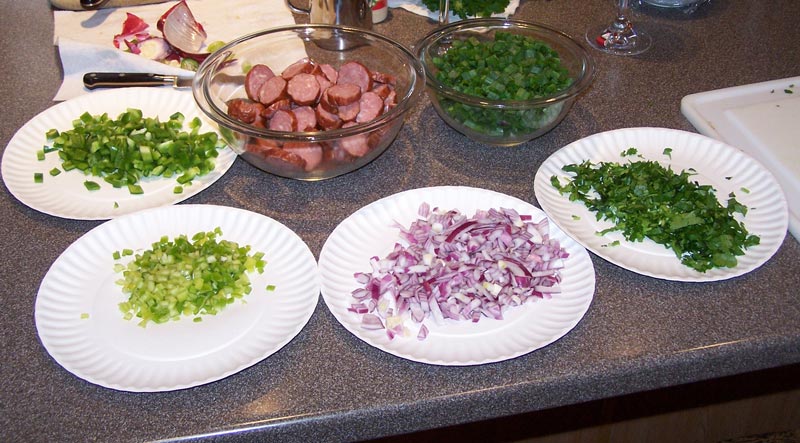
Donald likes the andouille and sausage cut into about 1/4" pieces. I like it cut thinner but I was working under Don's direction so that's how I cut it.

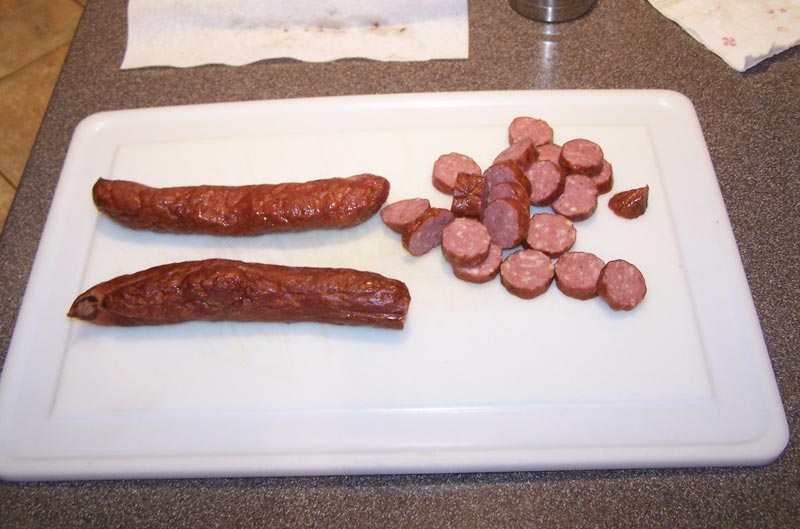
The chicken is cooked before putting it in the pot. Prepare it with salt and pepper before cooking. Here we're using six boneless chicken thighs and Don is cooking them on the grill. I often boil the chicken and use the stock in the gumbo. Also, I like the chicken falling apart in gumbo but Don likes it to stay together so grilling it works better for him. Here each thigh is cut into quarters.
You can use legs instead of thighs, or if you have left over chicken or turkey, you can use that.
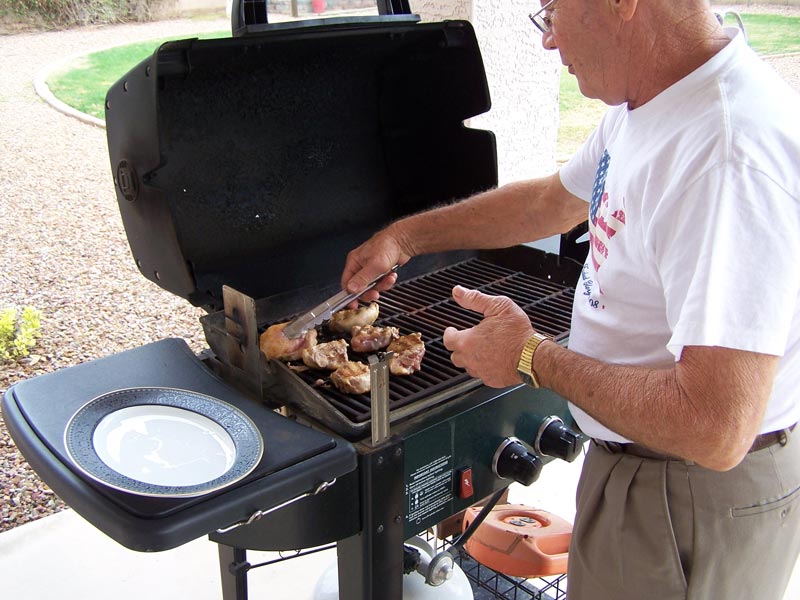
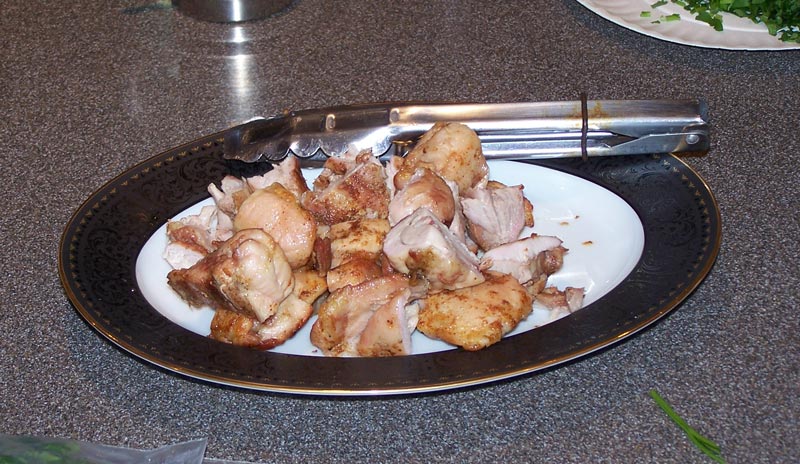
One thing you should always use when cooking Cajun food is wine. You don't always put it into the pot, however.

The andouille goes into a pot and is boiled for a while to tenderize it. The water will be used as stock in the gumbo.
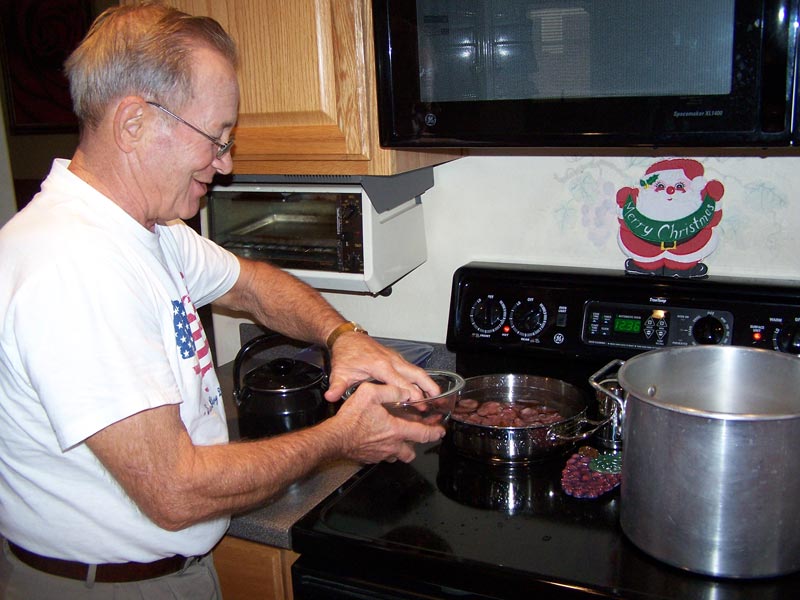
The next step is to make the roux. Don makes his roux the new, healthy "dry" way that has gained popularity in south Louisiana - he doesn't use any oil. To make dry roux you put flour in the pot and stir it while heating it, until it browns which may take about 15 minutes. Do not stop stirring the flour - the flour will burn and ruin the roux. There's nothing that taste worse than a dish made from burned roux - once you taste it, you'll recognize the taste ever after - it's very distinctive. If you burn the roux, throw it away and start over. Never try to "salvage" a burned roux.
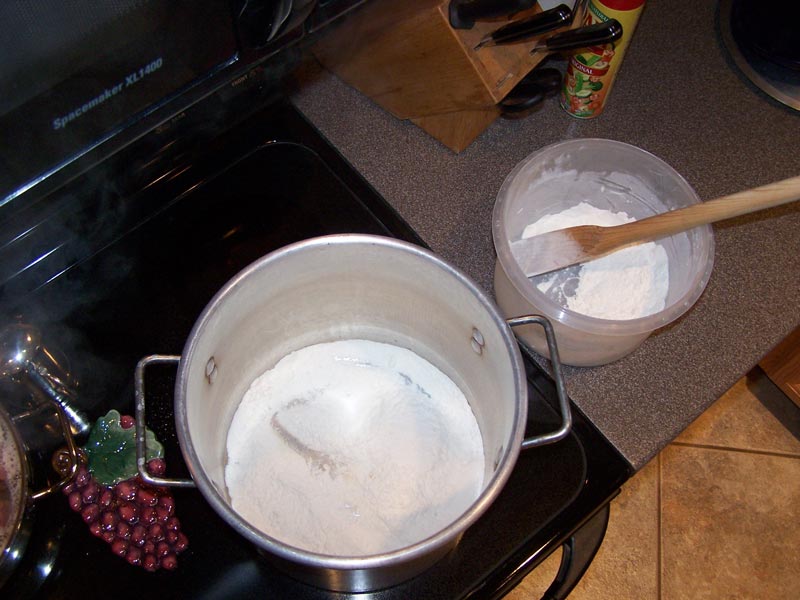
The traditional way of making a roux is to use oil with the flour. If you're going to make a dark roux, you have to use vegetable oil. A light roux can be made with butter. You want a mixture that's somewhat thick and you need to stir it constantly, just like Don's dry roux.
If you make a dry roux, you need to be careful because the dry flour will not darken as much as a "wet" roux. But once you add water to the dry roux it'll darken quite a bit. So just don't over do the cooking of your dry roux. Compare the next picture of the cooked flour with the color of the roux after stock is added to it.

Once the flour is prepared, Don adds the andouille stock to it to make a thick paste.
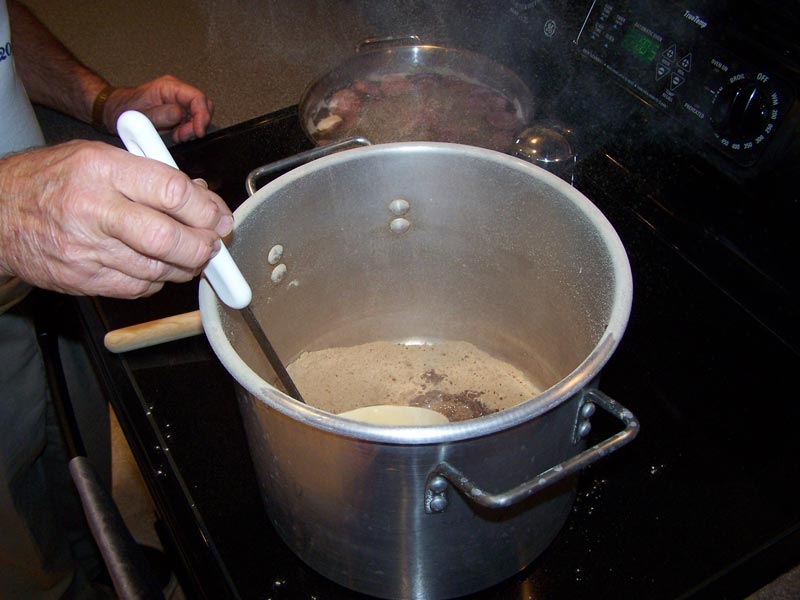
The flour is very hot so add the hot stock carefully and stir the mixture to make sure no lumps form. This is what it looks like after the stock is added. Note how dark the roux is compared to the color of the cooked flour.
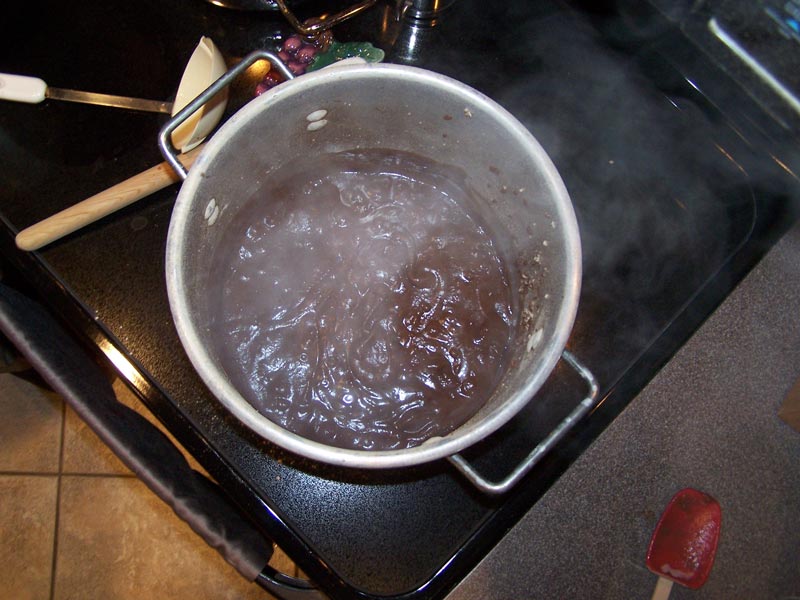
Replenish the water in the andouille pot and add more water to the gumbo pot.
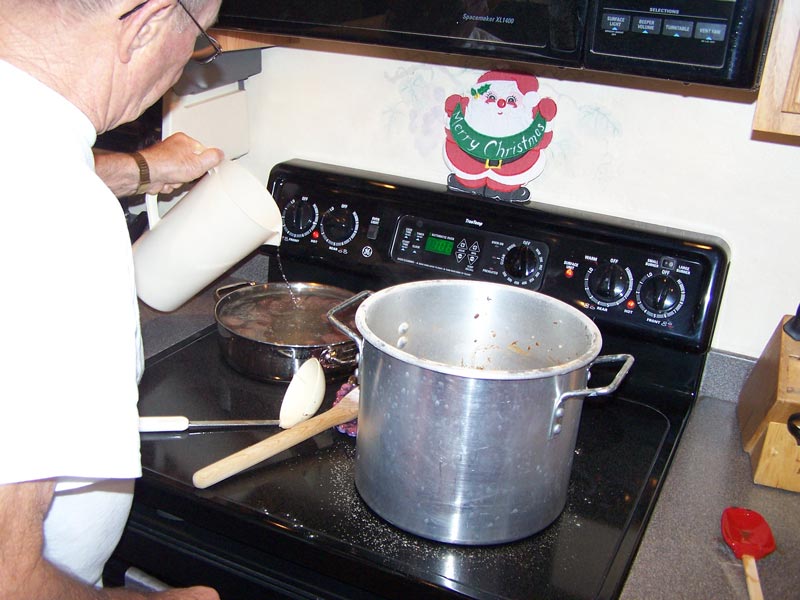
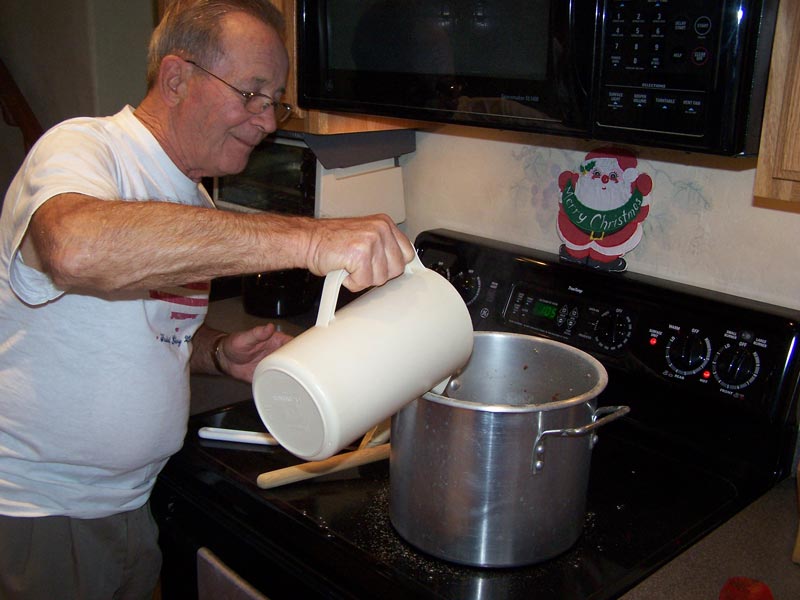
Here's what it looks like after adding the water.
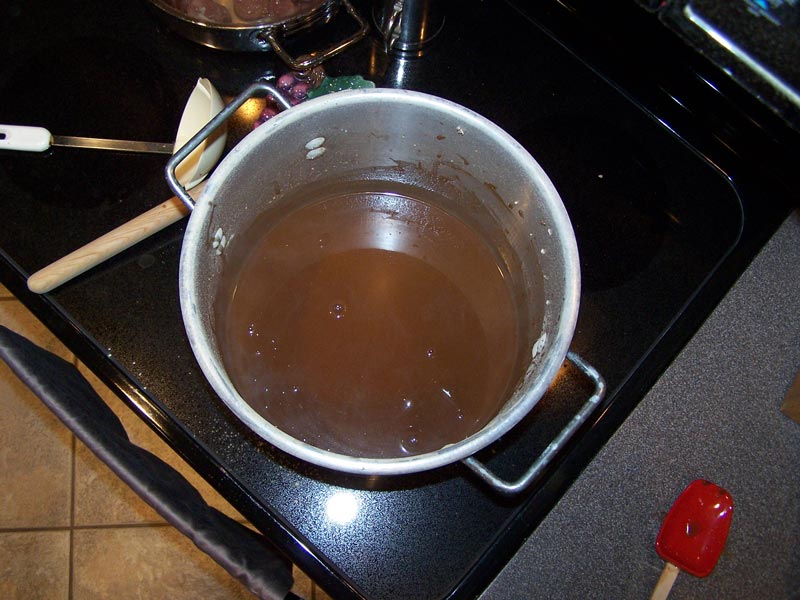
Bring the gumbo pot to a simmer and begin adding the vegetables - peppers, red onion, green onion. Do not add the parsley at this time.
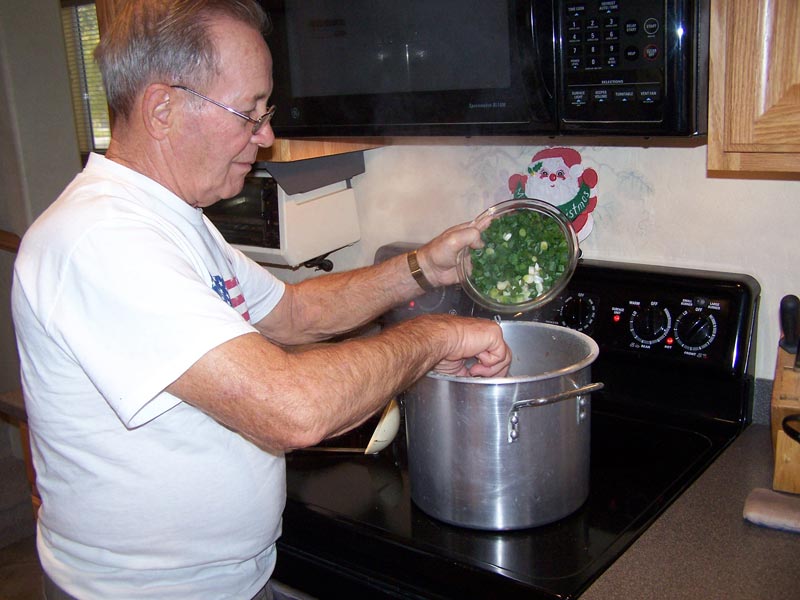
Add more of the andouille stock, then put the smoked sausage in the andouille pot (along with the andouille) and boil it for about 15 minutes. Then put the andouille and sausage into the gumbo.

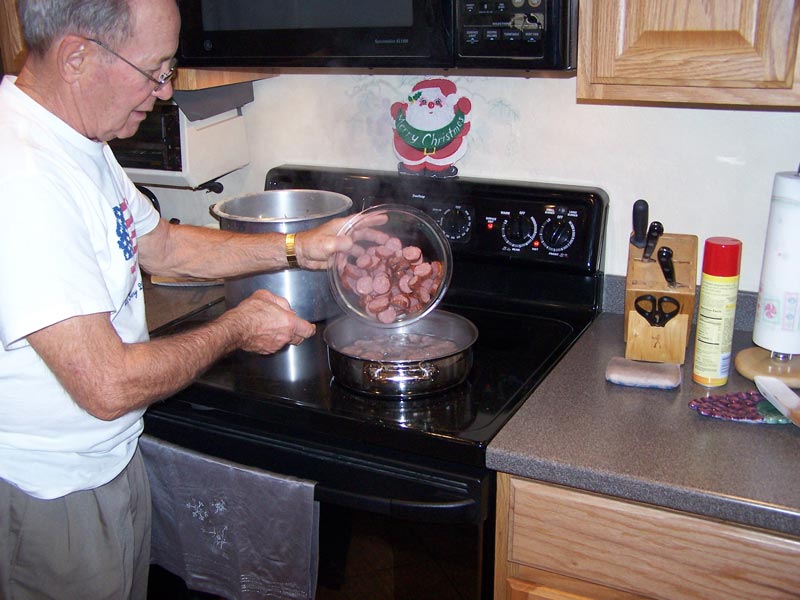
This is what the "raw" gumbo looks like. It now has to cook for about an hour and a half.
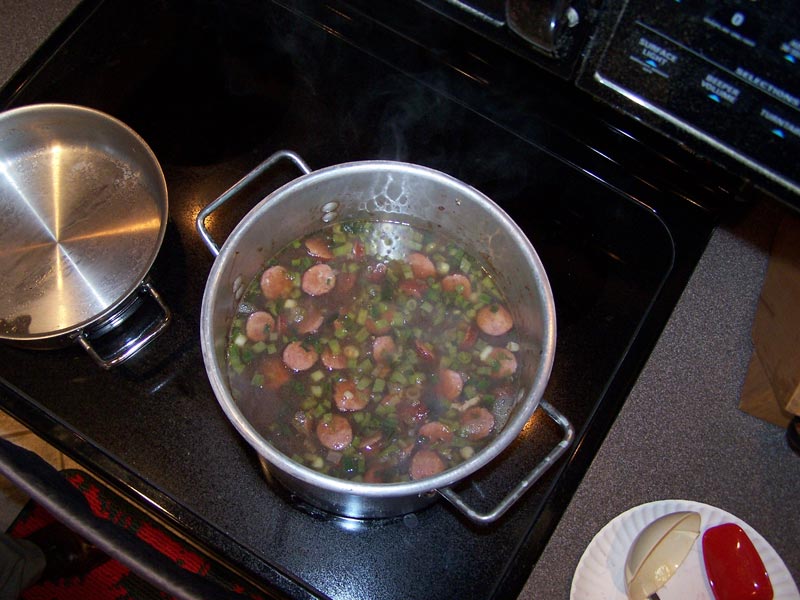
Once the gumbo has cooked for about an hour and a half, add some file, the parsley and the chicken.
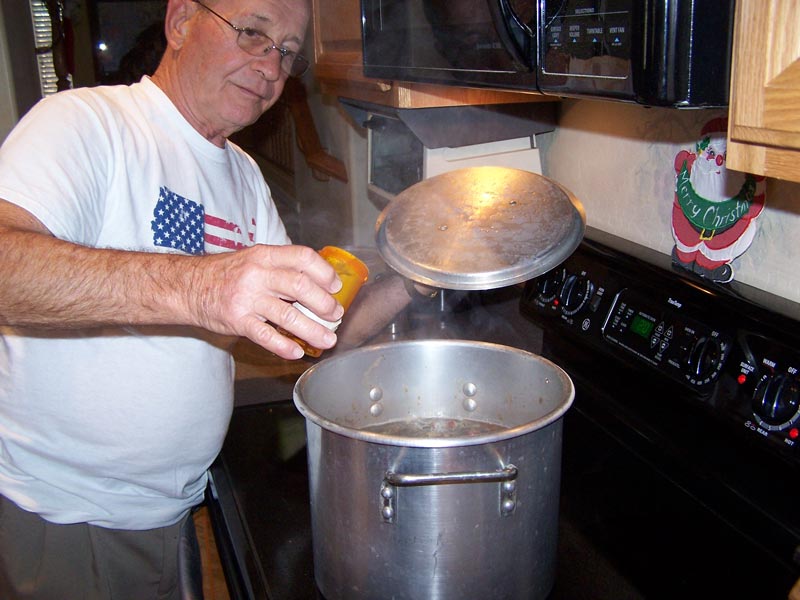
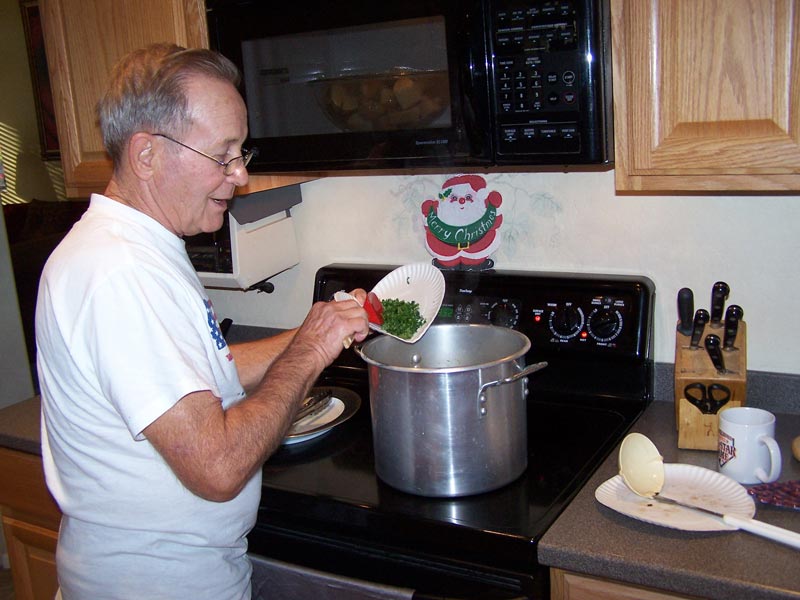
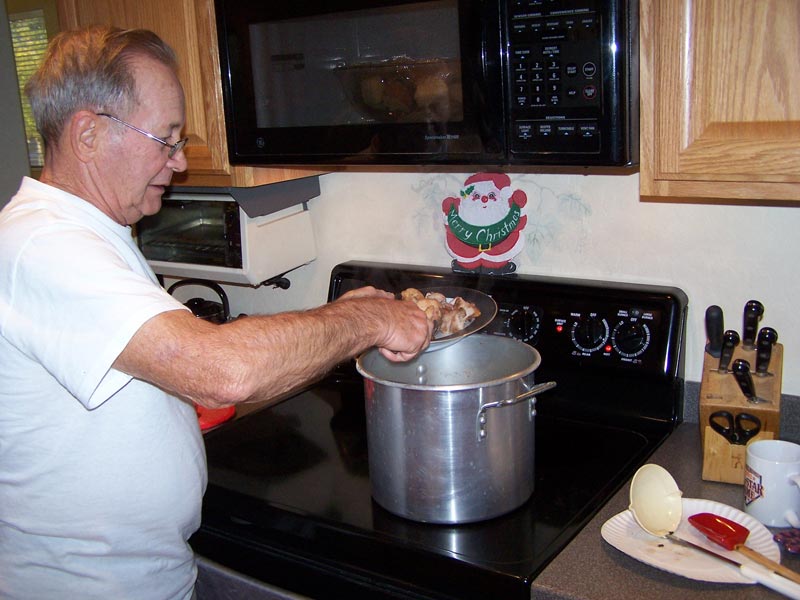
Now, let the gumbo cook for another hour or two - but the longer it cooks the better. Don says that gumbo is even better 'left over" because the flavors meld more. About 20 minutes prior to serving, put on some white rice. You can use regular white rice, or parboiled rice, like Uncle Ben's. Use a soup bowl, put your rice in the bowl first, then ladle the gumbo over the rice. Some people like lots of rice with just enough gumbo to wet the rice, and others like just a little rice and lots of gumbo, sort of like "gumbo-rice" soup.
You can sprinkle a little extra file on your gumbo before eating.
But no matter how you eat it, it's a wonderful dish!
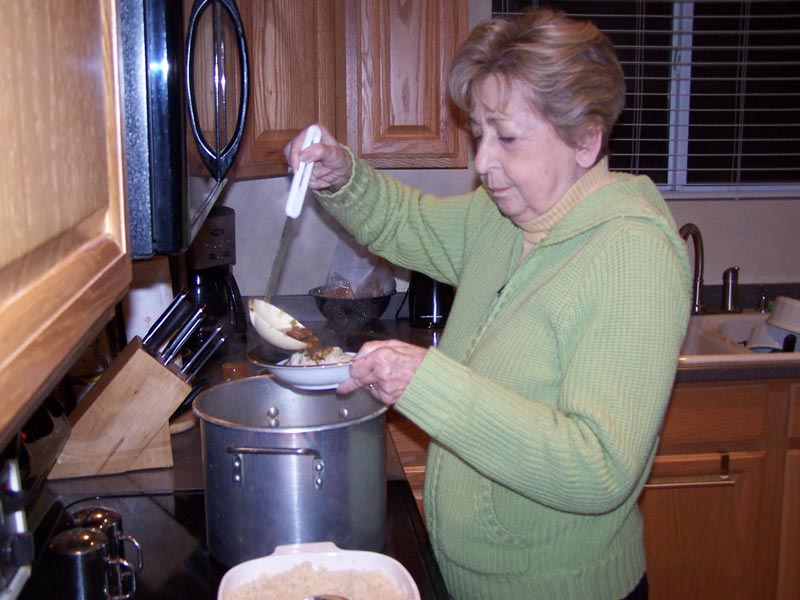

A few additional comments. If you make seafood gumbo, don't cook the seafood to death - add it towards the end of the cooking time. Crab and shrimp, especially, can be easily cooked into mush. If you use okra, add the okra towards the beginning of the cooking. Most people want the okra for thickening (and taste) and cook it into the broth. When finished, you usually don't see large pieces of okra in the gumbo.
If you make gumbo from this tutorial, please let me know how it came out, and send me a picture.
You can return to my woodwork here.